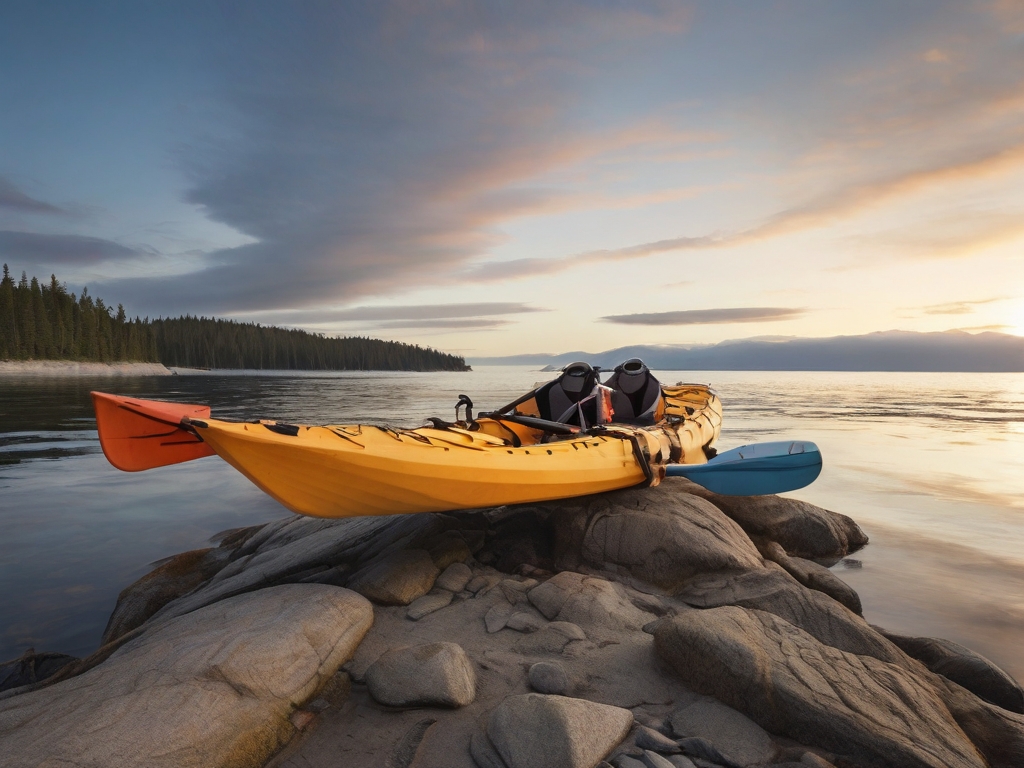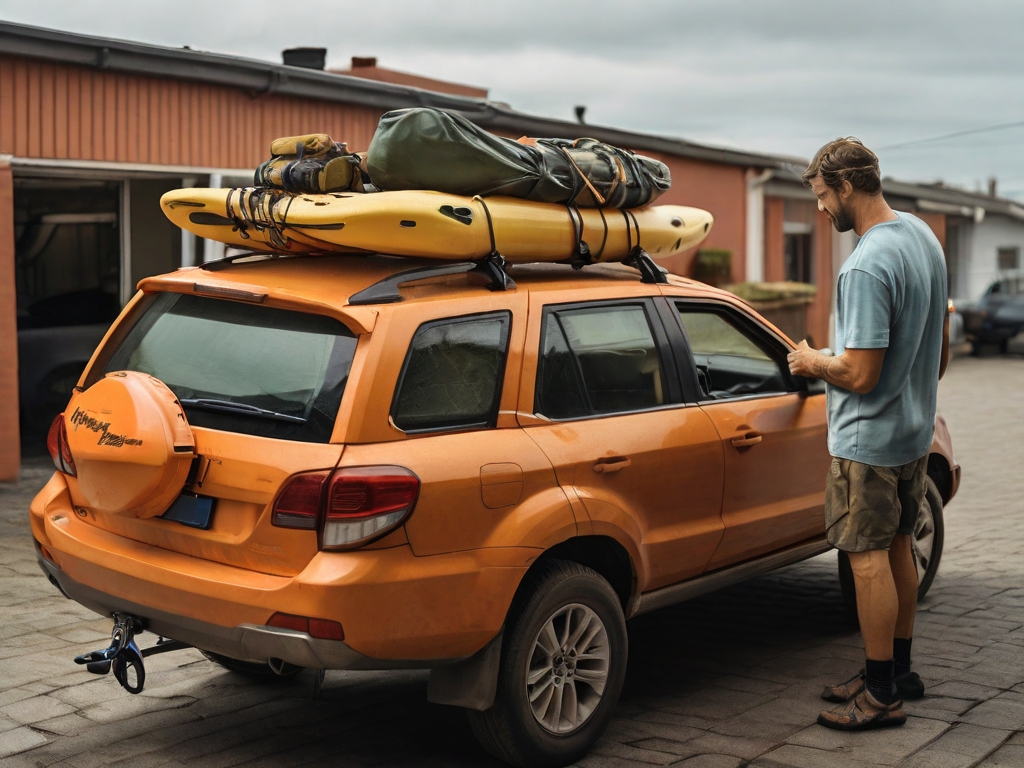How to Transport a Fishing Kayak
Introduction
Welcome, fellow anglers and adventure enthusiasts! Today, we embark on a journey to unravel the mysteries of transporting a fishing kayak. Whether you’re a seasoned angler or a novice in the world of kayaking, the proper transportation of your fishing kayak is crucial for a hassle-free and enjoyable experience. In this comprehensive guide, we’ll explore various methods, tips, and tricks on how to transport a fishing kayak safely and efficiently.

Reasons Why You Would Transport Your Kayak
As anglers, the love for fishing often transcends the boundaries of a single water body. The allure of exploring new lakes, rivers, or coastal areas compels us to transport our fishing kayaks. In this exploration of reasons, we delve into the why behind the necessity of transporting a fishing kayak, extending beyond the practicalities of loading and securing.
Diverse Fishing Spots Await
The vast world of fishing offers a myriad of locations, each presenting its unique charm and fishing opportunities. From serene mountain lakes to lively coastal estuaries, transporting your fishing kayak enables you to access a diverse range of fishing spots. Embrace the adventure of discovering new landscapes and unlocking the potential of untapped fishing grounds.
Pursuing Seasonal Fish Migration
Fish, like any other species, follow seasonal patterns. Transporting your fishing kayak allows you to chase these migrations, ensuring that you’re where the fish are during different times of the year. Whether it’s the annual salmon run or the movement of bass to warmer waters, having the ability to transport your kayak ensures you’re in the right place at the right time.
Exploring Remote and Untouched Waters
For the true adventurer, the appeal lies in exploring remote and untouched waters where larger boats cannot venture. Be it a hidden cove, a meandering creek, or a secluded pond deep in the woods – your fishing kayak becomes the key to unlocking these hidden gems. Transporting your kayak allows you to escape the crowds and savor the tranquility of untouched nature.
Fishing Tournaments and Competitions

For avid anglers who thrive on the competitive spirit, participating in fishing tournaments and competitions is a way of life. These events often take place in different locations, and having the means to transport your fishing kayak becomes essential for joining the ranks of fellow competitors. Whether it’s a local bass tournament or a regional kayak fishing championship, mobility is the name of the game.
Tailoring Your Fishing Experience
Every angler has their own preferences when it comes to fishing environments. Some enjoy the peacefulness of a still lake, while others revel in the challenge of navigating rivers with varying currents. By transporting your fishing kayak, you have the freedom to tailor your fishing experience to suit your preferences, ensuring that every outing is precisely the adventure you desire.
Bypassing Fishing Restrictions
Certain bodies of water may have restrictions on motorized boats or specific access points. Fishing kayaks, being non-motorized and easily portable, offer a solution to navigate around such restrictions. Transporting your kayak grants you access to waterways that might be off-limits to larger vessels, providing a unique advantage in reaching secluded fishing havens.
Family Fishing Adventures
Fishing is a hobby that often transcends generations, and what better way to bond with family than a day out on the water? Transporting your fishing kayak allows you to share the joy of fishing with your loved ones. Explore family-friendly fishing locations, teach the art of angling to the younger ones, and create lasting memories together.
Escaping Adverse Weather Conditions
Weather can be unpredictable, and your favorite fishing spot might be subject to adverse conditions such as heavy rain, storms, or excessive wind. Transporting your fishing kayak equips you to adapt to changing weather patterns by seeking sheltered areas or exploring alternative fishing locations. It ensures that a sudden change in weather won’t dampen your fishing plans.
Specialized Fishing Opportunities
Certain fishing techniques require specific environments. Whether it’s fly fishing in shallow streams, trolling in open waters, or casting along the shoreline, transporting your fishing kayak allows you to engage in specialized fishing techniques tailored to the conditions of each location. Embrace the versatility of your kayak for a truly immersive angling experience.
Connecting with Like-Minded Communities
The fishing community is vast and diverse, with enthusiasts from all walks of life. Transporting your fishing kayak enables you to connect with like-minded individuals at different fishing events, workshops, or gatherings. Share your experiences, learn new techniques, and foster friendships that revolve around a shared passion for angling.
How to Transport a Fishing Kayak: A Crucial Starting Point
Transporting your fishing kayak may seem like a daunting task, but fear not! Let’s dive into the nitty-gritty of the process.

Loading and Securing: A Step-by-Step Guide
First things first, loading your fishing kayak onto your vehicle requires finesse and precision. Follow these steps for a seamless loading experience:
- Positioning Matters: Align your kayak parallel to your vehicle with the bow (front) facing forward.
- Tailgate or Rooftop?: Determine whether you’ll load your kayak onto the tailgate or rooftop. This decision may vary based on your vehicle type.
- Strap It Down: Use sturdy straps to secure your kayak tightly. Ensure the kayak is snug against the vehicle, preventing any wobbling during transit.
- Check and Double-Check: Before hitting the road, give your setup a thorough inspection. Confirm that straps are tight and the kayak is stable.
Choosing the Right Rack: A Buyer’s Guide
Investing in the right rack system can make a world of difference. Let’s explore your options:
- J-Style Racks: A Stylish Choice: J-style racks are not only stylish but also efficient. They cradle the kayak on its side, leaving room for additional gear.
- Saddle Racks: Embrace the Stability: Saddle racks provide a flat surface for your kayak to rest on. They offer stability and are an excellent choice for longer journeys.
- Stacker Racks: Maximize Capacity: If you’re transporting multiple kayaks, stacker racks are your best bet. They allow you to carry more kayaks without compromising stability.
Navigating the Road: Tips for a Smooth Journey
With your kayak securely fastened, it’s time to hit the road. Let’s discuss some essential tips for a smooth journey.
Highway Hurdles: Overcoming Challenges
- Wind Resistance Woes: Kayaks can catch the wind, causing drag. Combat this by driving at a moderate speed and using a wind deflector if possible.
- Mind the Overhang: If your kayak extends beyond your vehicle, be cautious when passing through tight spaces, such as tunnels or parking garages.
Fueling the Adventure: Packing Essentials
- Packing 101: Gear and Gadgets: Ensure all your fishing gear is stowed securely within the kayak. Consider investing in storage containers to keep everything organized.
- Emergency Kit Essentials: Prepare for the unexpected by packing an emergency kit. Include items like a first aid kit, tools, and a spare paddle.
Conclusion: Mastering the Art of Kayak Transportation
The reasons to transport your fishing kayak extend far beyond mere convenience. It’s about embracing the spirit of exploration, adapting to the dynamic nature of fishing, and connecting with the vast and vibrant fishing community. So, load up your kayak, hit the road, and let the waters guide you on an angler’s odyssey that transcends the boundaries of any single water body.
The journey of transporting a fishing kayak is an art that, once mastered, opens up a world of aquatic adventures. From loading and securing to choosing the right rack system, we’ve covered the essential aspects. Remember, a well-prepared journey sets the stage for an unforgettable fishing experience. So, gear up, secure that kayak, and hit the road – the waters are calling!
Frequently Asked Questions
Q1: How do I secure my kayak to a roof rack?
To secure your kayak, use high-quality straps and follow the manufacturer’s guidelines for your specific roof rack.
Q2: Can I transport a fishing kayak with a small car?
Absolutely! Invest in a suitable roof rack or trailer hitch, and you can transport your fishing kayak with ease, regardless of your car’s size.
Q3: Are there weight limitations for roof racks?
Yes, each roof rack has a weight capacity. Always check the specifications to ensure your kayak falls within the recommended limit.
Q4: Do I need a special license to transport a kayak?
In most places, a special license isn’t required for kayak transportation. However, familiarize yourself with local regulations to ensure compliance.
Q5: Any tips for solo kayak transport?
When transporting a kayak alone, consider using a kayak trolley to ease the loading process. Take your time and double-check all securing measures.

